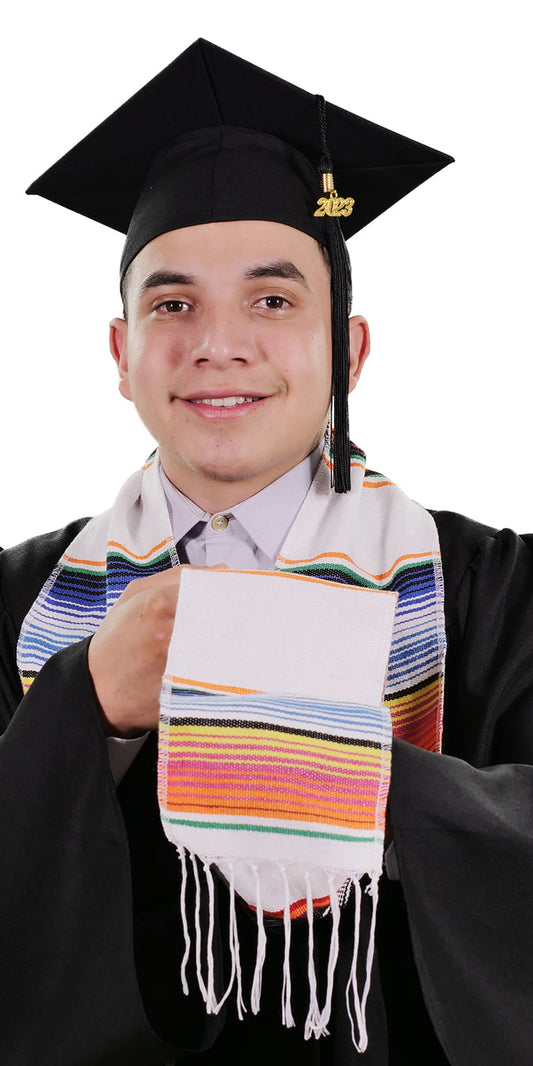Collection: Mexican Serape Stoles & Sashes
-
White Mexican Serape Graduation Stole/Sash
Regular price List price: $24.95 USDRegular price -
Black Mexican Serape Graduation Stole/Sash
Regular price List price: $24.95 USDRegular price -
Red Mexican Serape Graduation Stole/Sash
Regular price List price: $24.95 USDRegular price
Collection: Mexican Serape Stoles & Sashes
-
Cultural Heritage: Serapes and sashes have deep roots in Mexican history and culture, dating back to pre-colonial times. The weaving techniques and designs used in creating these garments have been passed down through generations, making them an essential part of Mexico's heritage.
-
Symbol of Identity: These colorful garments represent regional identities and are associated with specific states or areas in Mexico. Different regions have their own unique patterns and colors, allowing people to identify one's origin or affiliation by the design of the serape or sash.
-
Celebrations and Festivities: Serapes and sashes are often worn during various traditional festivals, religious events, and special occasions. They add a sense of festivity and pride to these celebrations, making them an integral part of the Mexican fiesta culture.
-
Functional Use: Beyond their cultural significance, serapes also serve practical purposes. They provide warmth during cool evenings or in colder regions of Mexico, acting as a comfortable and stylish wrap.
-
Artistic Expression: The craftsmanship involved in creating serapes and sashes is considered an art form. Skilled artisans spend hours weaving intricate patterns and incorporating vibrant colors into the fabric, showcasing the beauty of Mexican craftsmanship.
-
Tourism and Trade: The appeal of these culturally rich garments has also contributed to their popularity among tourists. Visitors to Mexico often purchase serapes and sashes as souvenirs, which supports local artisans and helps promote Mexican culture on the international stage.
-
Connection to Indigenous Heritage: For many indigenous communities in Mexico, serapes and sashes hold special significance as they represent their ancestral traditions and craftsmanship. Wearing these garments can be a way to preserve and celebrate their indigenous heritage.
In summary, Mexican serape stoles and sashes are more than just clothing items; they are symbols of cultural identity, artistic expression, and traditions that have endured for centuries. Their colorful patterns and historical significance make them an integral part of Mexico's rich cultural tapestry.






